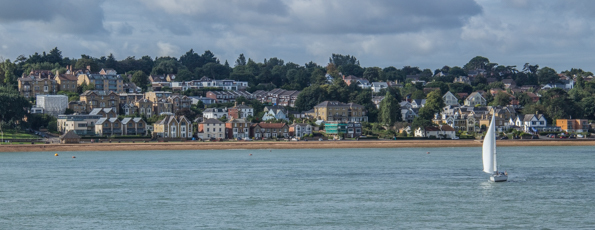
After disembarking from the car ferry at East Cowes on the Isle of Wight I made my way to the Tourist Information centre a short distance from the terminal. Armed with bus timetables and maps I set off to find Osborne the house Queen Victoria and Prince Albert built soon after they were married. I had been assured it was just ten minutes up the hill. Twenty minutes later I realised I should have specified I was travelling on foot. However, I was already getting the flavour of the island. A helpful local pointed out No 1 Sovereign Gate, the official entrance for the Royal Family (but not for visitors). The extensive grounds of Osborne stretch from the outskirts of the town down to the sea.
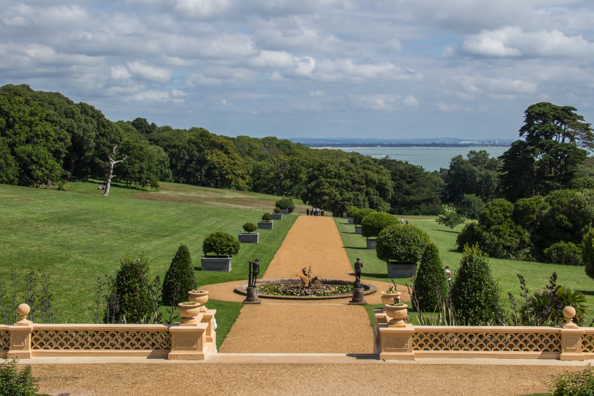
On arrival at Osborne I decided to walk to the Swiss Cottage to sample the cakes on sale at the Gazelle Hut. It was very pleasant strolling through the park and then through the kitchen gardens around the Swiss Cottage to the Gazelle Hut. Victoria and Albert had been determined that their nine children should understand where their food came from so they worked in the kitchen gardens and played in the Swiss Cottage. Prince Albert built this cottage between 1853 and 1854. It was here the children learnt the skills necessary for adulthood. Along with the beach it was their favourite place. Now it is a fascinating inter-active museum.
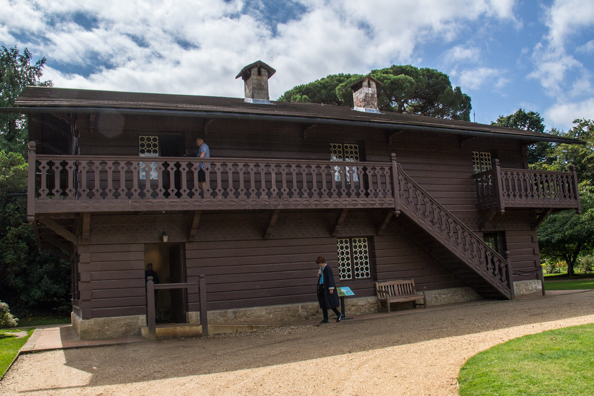
In the gardens surrounding the Swiss Cottage are many reminders of the time the Royal Children played there. I particularly liked the Victoria Fort and Albert Barracks. The earthworks of this miniature fort and barracks were laid out by the royal princes in 1856 as a birthday surprise for Queen Victoria. In 1860 Prince Arthur, then ten years old, built the barracks even making some of the bricks himself. The fort was probably designed by Lieutenant Cowell of the Royal Engineers who was Alfred’s governor. It was a bit old-fashioned for the times but very similar to the forts Cowell would have seen during the Crimean War. It is said that Beatrice, the baby of the family, once shut her governess in the barracks and made her bark like a dog before she would release her!

I took advantage of the courtesy bus to get to the house itself. The house is stunning and the gardens are beautiful. I could have sat in the gardens for hours enjoying the fabulous views down to the sea and perhaps stroll down to the beach. Tempting though it was I also wanted to walk round the house so I made my way inside. It was a fascinating insight into the life of Victoria and her family. I was particularly enchanted by the swinging cradle and row of three cots in the nursery.
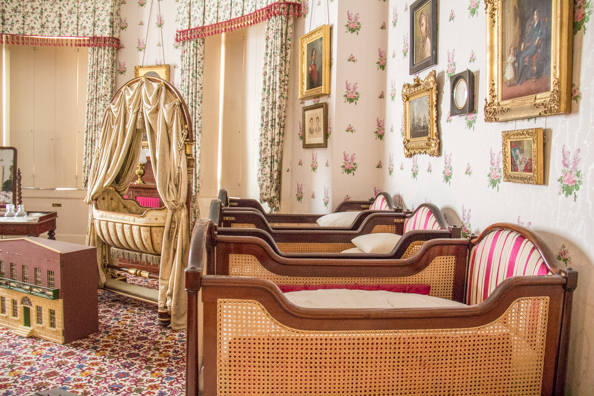
My favourite room was the Durbar Room. Stepping inside this magnificent dining room I felt as though I had been transported to Rajasthan. Victoria built the Durbar room after the death of Prince Albert. By the 1890s she was spending more and more time at Osborne and decided the house needed staterooms so that she could hold court there. The style of the room reflects the affinity Victoria had with India and her role as Empress of India. Costumes used during the making of the film Victoria and Abdul are on display here as well as the many gifts she received from India.
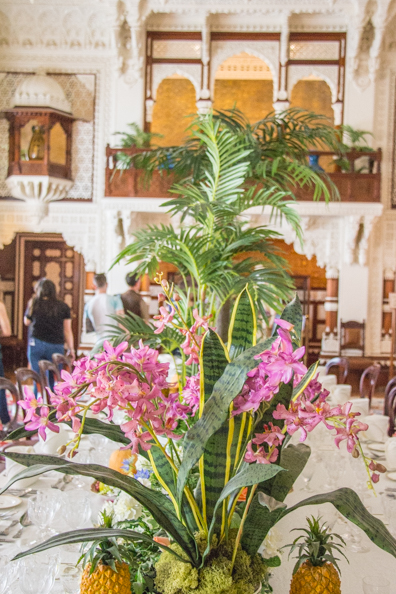
I love gardens and made a quick visit to the Walled Garden behind the house. It was so beautifully kept – acres of orderly blooms and fruit trees. The whole park is peppered with fabulous flower beds and gardens that change character with the changing seasons.
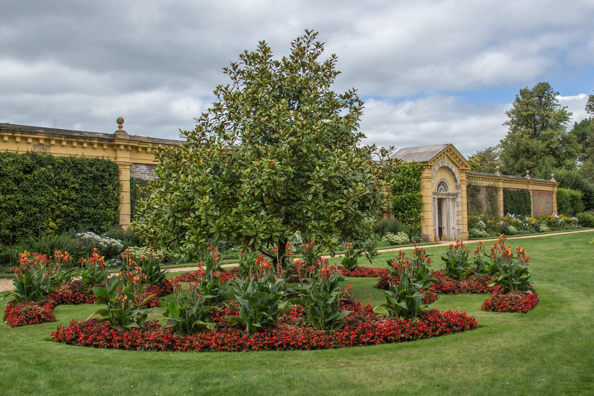
It would be very easy to spend a whole day at Osborne but I wanted to explore further. Having decided to use public buses to get around the island I was disappointed when two buses to Newport bus station (the transport hub) failed to turn up. They had been trapped in traffic in Newport so I made a mental note that I would arrive earlier before the rush and study the bus timetable more carefully. When the bus did arrive the bus driver was very friendly and happy to tell me how to could get to Carisbrooke Castle. This journey was much easier and soon after I arrived in Newport a connecting bus arrived and five minutes later I was in Carisbrooke village. I followed the signs to the castle via a path that negotiates two stiles and climbs and hill. It was a pleasant walk with great views of the castle at the end of it.
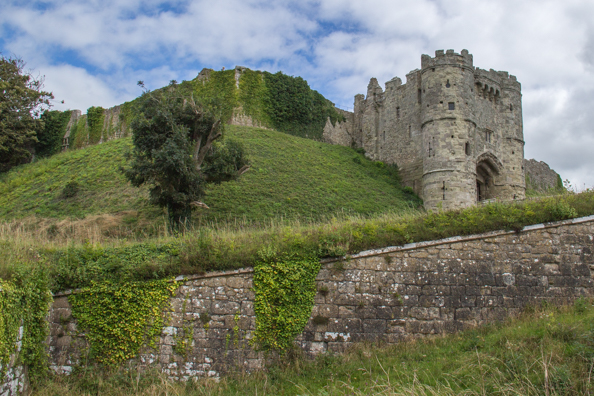
I walked around the castle and also went up onto the turret walls. From here I had a great view of the castle itself and the surrounding countryside. Princess Beatrice, the youngest daughter of Queen Victoria lived here when she was governor of the island.
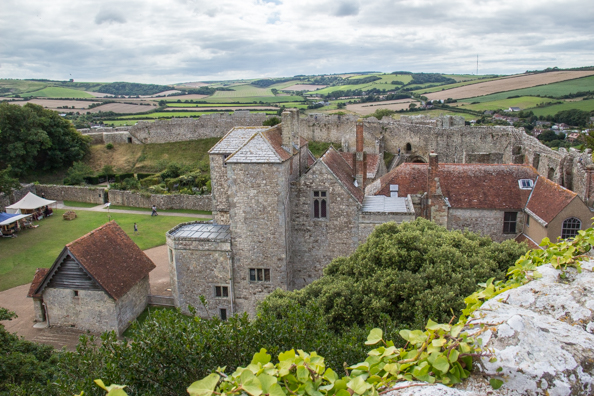 I had a brief stop at the Tea Rooms for a scrumptious sausage bap before completing my tour. I visited the Princess Beatrice Garden and the Chapel of St Nicholas adjoining the garden. This chapel became a war memorial for the whole island commemmorating those who died during the First World War. The Well Room housed the only well in the castle. It was the need to get water up from the well that led to the installation of the famous Carisbrooke donkeys. Sadly there were no demonstrations of a donkey turning the wheel while I was there but a member of staff stepped in to demonstrate how it worked. The wheel was originally turned by people but they could not do it quickly enough to satisfy the demand for water in the castle as that one well was the only source of water. I was enticed into the Carisbrooke Castle Museum by the promise of viewing the bedroom that Charles I used when he was imprisoned in the castle. This museum was established by Princess Beatrice in 1898 in memory of her husband Prince Henry of Battenburg. This independent museum is now run by volunteers and I was given a very enthusiastic welcome.
I had a brief stop at the Tea Rooms for a scrumptious sausage bap before completing my tour. I visited the Princess Beatrice Garden and the Chapel of St Nicholas adjoining the garden. This chapel became a war memorial for the whole island commemmorating those who died during the First World War. The Well Room housed the only well in the castle. It was the need to get water up from the well that led to the installation of the famous Carisbrooke donkeys. Sadly there were no demonstrations of a donkey turning the wheel while I was there but a member of staff stepped in to demonstrate how it worked. The wheel was originally turned by people but they could not do it quickly enough to satisfy the demand for water in the castle as that one well was the only source of water. I was enticed into the Carisbrooke Castle Museum by the promise of viewing the bedroom that Charles I used when he was imprisoned in the castle. This museum was established by Princess Beatrice in 1898 in memory of her husband Prince Henry of Battenburg. This independent museum is now run by volunteers and I was given a very enthusiastic welcome.
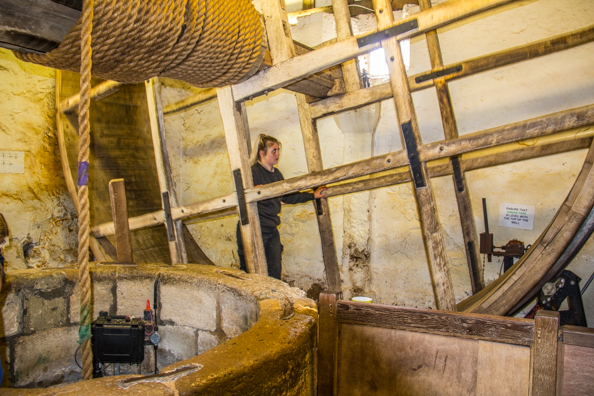
I was fortunate the buses dove-tailed well when I made my way back to Newport and on to Ventnor. My objective was the Ventnor Botanic Gardens. It was very close to the closing time of five o’clock and I had missed the last bus that goes to the gardens. it is a half-hour walk from the town so I set off hoping that if the gardens were closed I could at least peak over a wall. I found a path at the back of the gardens which lead me into the gardens so I was not disappointed. These gardens developed from the grounds of the National Cottage Hospital for Consumption Diseases of the Chest founded in 1868 by the eminent physician and naturalist Arthur Hill Hassall. It coincided with the growing popularity of open-air treatment for tuberculosis and the grounds were extended to accommodate a system of graded walks and manual labour for patients. The microclimate of the Undercliff area where the hospital was based was ideal for the growing of a wide variety of plants and trees. When the hospital closed in 1964 the main building was demolished but the local authority retained the grounds as an open space. It was later acquired by the Isle of Wight County Council and reopened as Ventnor Botanic Garden. The gardens are still evolving and revealing its secrets for example, underground caverns, secret passageways and a tunnel through the cliff.
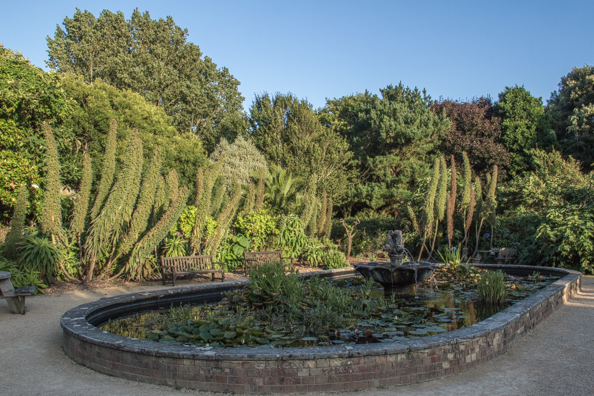
After a brief tour of these beautiful gardens I reluctantly took my leave. I asked one of the gardeners for directions back to Ventnor. I was told to walk through the gardens as far as I could go and turn left at the buoy. Or was it the boy? i did not ask. On my way I passed one of the famous tunnels in the garden. When I ran out of path I finally spotted a huge buoy at the top of the hill above me …

Once I was back on the coastal path I had time to enjoy the walk along the coastal path. This took me through the pretty Steephill Cove. The cove (including the public toilets) is cared for the local residents. It is a lovely secluded place with several places to get food and drinks. By the time I walked through they were all closed. The only bit of excitement was the appearance of a gang of pirates who rushed past me and disappeared into the Lighthouse. I paused to enjoy the view – everything was bathed in the golden glow of late evening.
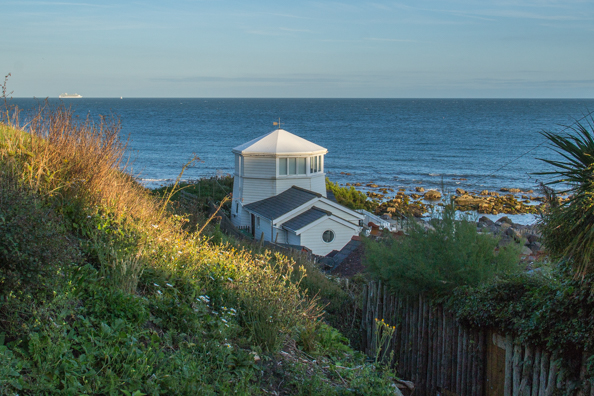
I made my way through Ventnor Park an extensive grassy area topping the cliffs. The views up and down the coast below me were impressive. The town was buzzing by the time I got back there. Some more gangs of pirates brushed past me on their way to join the illuminated Carnival parade. I had a bus to catch so I had to move on.
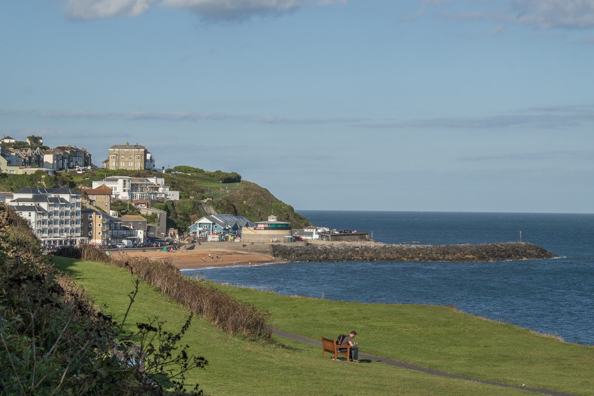
When I got back to Newport I headed for West Cowes and the high-speed passenger ferry back to Southampton. It had been a memorable day and a step back to the days when the younger generation gave up their seats on buses to the older generation.